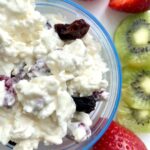|
Getting your Trinity Audio player ready...
|
The onion (Allium cepa L.) It is probably the most widely used vegetable in cooking around the world. Depending on the variety, its flavor ranges from mild to strong. It is native to northern Asia and Palestine. It has been cultivated for over 5,000 years.
The main varieties of onion are yellow, sweet (light yellow), white and purple. Shallots (shallots, a hybrid of onion and garlic), chives (scallions) and spring onions (chives), also classified as onions. They contain 901 tbsp of water and provide approximately 64 calories per cup. They are also cholesterol-, sodium-, and fat-free.
The main bioactive substances and nutrients in onion are as follows.
- Vitamin C
- Sulfur compounds
- Iron, copper, manganese, zinc
- Soluble fiber: fructooligosaccharides and inulin
- Flavonols: quercetin, isorhamnetin, kaempferol, and rutin. Quercetin and its glycosides represent 80 to 95% of the total flavonols in onions.
- Anthocyanins, present in red or purple onions: cyanidin, peonidin, pelargonidin
10 health benefits of eating onions
- Antihypertensive effects
- Benefits to the respiratory system
- Counteracts microbial infections
- Osteoporosis, as it improves bone density
- Diabetes, by stimulating insulin production
- Combats oxidative stress and cellular aging
- Antioxidant, anti-inflammatory and anticancer effects
- Hypercholesterolemia, lowering total cholesterol and 'bad' (LDL) cholesterol
- Prevents platelet aggregation, providing cardiovascular protection
- It offers gastrointestinal protection due to its prebiotic fiber and improves the intestinal microbiota.
The soluble fiber in onions acts as a prebiotic when it reaches the colon. This promotes the growth of beneficial bacterial flora for intestinal health. It also helps control blood cholesterol levels. It has a mucolytic and expectorant effect when its sulfur compounds reach the respiratory tract, helping with respiratory problems.
Sulfur compounds are what give onions their characteristic smell and flavor. They are volatile substances that are released from the onion when it is cut. When they reach the eyes, they produce the familiar and painful stinging and watering sensation.
The flavonols quercetin and kaempferol (Kaempferol), are natural antioxidants found in many plants. Kaempferol helps boost the body's antioxidant defense against free radicals, which promote cancer development. The flavonols and sulfur compounds in onions have important antioxidant, anti-inflammatory, antimicrobial, and anti-allergy functions.
Its flavonols play a preventive role in cardiovascular diseases, hypertension, hypercholesterolemia, diabetes, some types of cancer (mainly gastrointestinal), and respiratory system diseases. Purple onion varieties have higher amounts of quercetin, kaempferol, and sulfur compounds.
In studies on bone mineral density, onion juice improved antioxidant parameters and inhibited osteoclast formation. Osteoclasts are the only cells capable of removing calcified bone matrix. However, excessive bone tissue removal causes bone loss. This situation is observed in osteoporosis, arthritis, and cancer. In this particular case, onion helps prevent bone loss.
Cooking onions reduces the amount of vitamin C, sulfur compounds, and flavonols they contain. However, these losses depend on the cooking temperature, time, liquid used, and type of cooking. Therefore, it is not possible to determine exactly how much of these nutrients or substances is retained. If you suffer from flatulence or gastroesophageal reflux, it is recommended that you eat cooked onions rather than raw ones.
Main references
Nemtinov, V., Golubkina, N., Koshevarov, A., Konstanchuk, Y., Molchanova, A., Nadezhkin, S., Sellito, V. M. & Caruso, G. (2019). Health-Beneficial Compounds from Edible and Waste Bulb Components of Sweet Onion Genotypes Organically Grown in Northern Europe. Banat's Journal of Biotechnology, X(19): 58- 65. DOI: 10.7904/2068–4738–X(19)–58
Ren, F., & Zhou, S. (2021). Phenolic Components and Health Beneficial Properties of Onions. Agriculture, 11(9): 872. https://doi.org/ 10.3390/agriculture11090872
Wang, CK. (2020). Health Benefits of Onion Bioactives on Hypercholesterolemia, Cardiovascular Diseases, and Bone Mineral Density. Food Frontiers, 1(2):107-108. DOI: 10.1002/fft2.18











Very good https://is.gd/tpjNyL